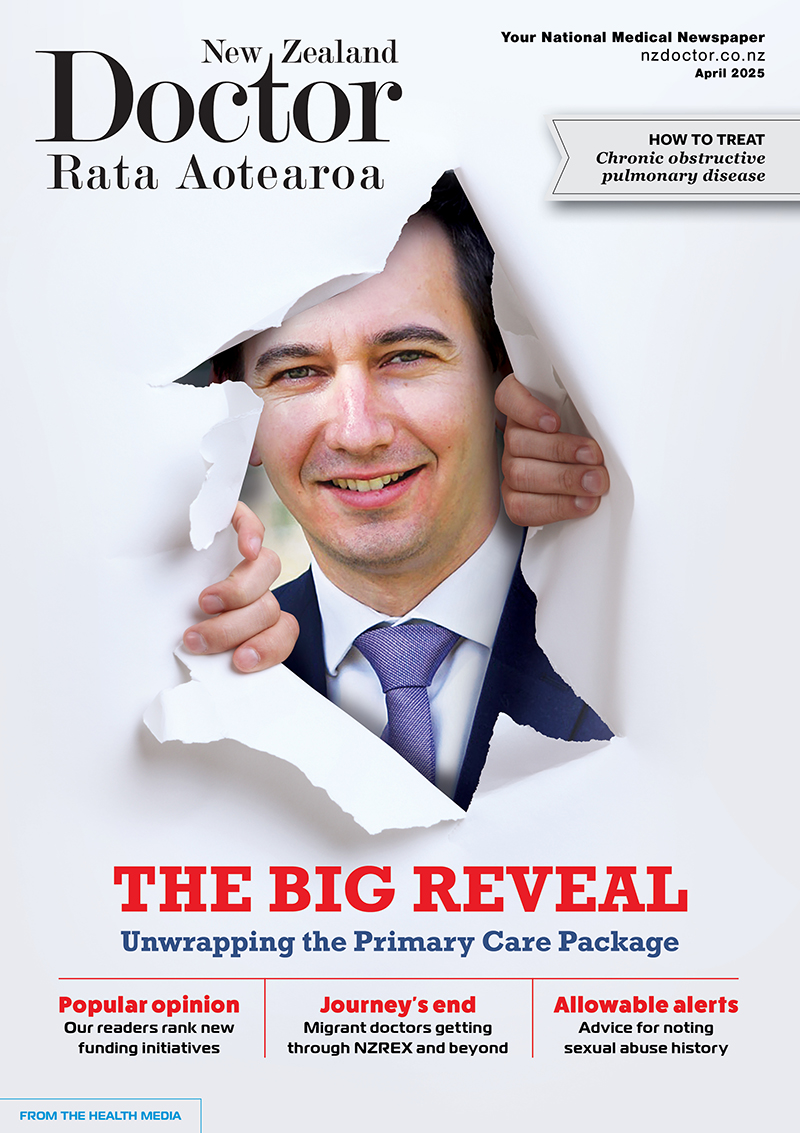Respiratory physician Lutz Beckert considers chronic obstructive pulmonary disease management, including the prevention of COPD, the importance of smoking cessation and pulmonary rehabilitation, and the lifesaving potential of addressing treatable traits. He also discusses the logic of inhaler therapy, moving from single therapy to dual and triple therapy when indicated, as well as other aspects of management
Prostate cancer - assessment answers
Prostate cancer - assessment answers

Below are the answers to the assessment from How to Treat: Prostate cancer
Record your score using the Capture button at the bottom of this page – simply add your score in the the Capture Note box that appears when you click on Capture. You can view your Capture Record at any time and even download a .csv file for your own records (more details about how Capture works can be found here).
Achieving 8 or more correct answers will allow you to claim the CPD credits allocated to this course (1 credit per learning hour). To claim your CPD credits, log in to your Te Whanake dashboard and record this activity under the appropriate learning category.
1. The evidence for prostate cancer screening and its role in New Zealand are best reflected by which three of the following statements?
b. Large randomised controlled trials show prostate cancer screening reduces prostate cancer mortality
d. Prostate cancer screening results in cases of overdiagnosis and potential overtreatment
e. The New Zealand recommendation regarding prostate cancer screening is for shared decision-making between patient and doctor
2. The purpose of the prostate-specific antigen test before treatment is to achieve which two of the following?
c. To identify patients at higher risk of localised prostate cancer who can consider further investigation
d. At higher levels, to identify those more at risk of metastatic prostate cancer
3. When giving a patient a PSA test result that is within the reference range for their age, you should potentially inform him of which of the following? (Three correct answers.)
a. He does not require immediate further investigation
c. He should have another PSA test in two to four years
d. If he has a strong family history of prostate cancer, he should consider having yearly PSA tests
4. When giving an asymptomatic patient an initial test result showing a slightly raised PSA level, you should also do which two of the following?
a. Arrange for a repeat PSA test in four to eight weeks
b. Explain that cancer is not the only cause for a raised PSA level
5. What raises the risk of prostate cancer the most?
b. Carrying a BRCA2 mutation
6. Biopsy is the only way to diagnose prostate cancer. Which two statements regarding prostate biopsy are correct?
b. Biopsy can be performed under either local or general anaesthetic
d. The transperineal route reduces the risk of faecal contamination and sepsis
7. For a man recently diagnosed with low-risk (ISUP grade 1) prostate cancer, which two pieces of advice are appropriate?
a. He can consider all forms of treatment, including active surveillance, surgery and radiotherapy
c. He should strongly consider active surveillance
8. When the decision to commence curative treatment for localised prostate cancer has been made, what is the best approach for most patients?
e. There is no clear best choice
9. For men diagnosed with high-risk prostate cancer, what is the most accurate way to assess their cancer burden?
d. PSMA PET scan
10. For metastatic prostate cancer, blocking the supply of testosterone is the mainstay of treatment. Which two statements regarding this form of treatment are correct?
a. Early involvement of novel hormonal agents and/or chemotherapy (when traditional hormone therapy is commenced rather than after it has failed) is beneficial
d. The side effects of testosterone suppression can be minimised in primary care
Remember to record your score using the Capture button below




![Barbara Fountain, editor of New Zealand Doctor Rata Aotearoa, and Paul Hutchison, GP and senior medical clinician at Tāmaki Health [Image: Simon Maude]](/sites/default/files/styles/thumbnail_cropped_100/public/2025-03/Barbara%20Fountain%2C%20editor%20of%20New%20Zealand%20Doctor%20Rata%20Aotearoa%2C%20and%20Paul%20Hutchison%2C%20GP%20and%20senior%20medical%20clinician%20at%20T%C4%81maki%20Health%20CR%20Simon%20Maude.jpg?itok=-HbQ1EYA)
![Lori Peters, NP and advanced health improvement practitioner at Mahitahi Hauora, and Jasper Nacilla, NP at The Terrace Medical Centre in Wellington [Image: Simon Maude]](/sites/default/files/styles/thumbnail_cropped_100/public/2025-03/2.%20Lori%20Peters%2C%20NP%20and%20advanced%20HIP%20at%20Mahitahi%20Hauora%2C%20and%20Jasper%20Nacilla%2C%20NP%20at%20The%20Terrace%20Medical%20Centre%20in%20Wellington%20CR%20Simon%20Maude.jpg?itok=sUfbsSF1)
![Ministry of Social Development health and disability coordinator Liz Williams, regional health advisors Mary Mojel and Larah Takarangi, and health and disability coordinators Rebecca Staunton and Myint Than Htut [Image: Simon Maude]](/sites/default/files/styles/thumbnail_cropped_100/public/2025-03/3.%20Ministry%20of%20Social%20Development%27s%20Liz%20Williams%2C%20Mary%20Mojel%2C%20Larah%20Takarangi%2C%20Rebecca%20Staunton%20and%20Myint%20Than%20Htut%20CR%20Simon%20Maude.jpg?itok=9ceOujzC)
![Locum GP Helen Fisher, with Te Kuiti Medical Centre NP Bridget Woodney [Image: Simon Maude]](/sites/default/files/styles/thumbnail_cropped_100/public/2025-03/4.%20Locum%20GP%20Helen%20Fisher%2C%20with%20Te%20Kuiti%20Medical%20Centre%20NP%20Bridget%20Woodney%20CR%20Simon%20Maude.jpg?itok=TJeODetm)
![Ruby Faulkner, GPEP2, with David Small, GPEP3 from The Doctors Greenmeadows in Napier [Image: Simon Maude]](/sites/default/files/styles/thumbnail_cropped_100/public/2025-03/5.%20Ruby%20Faulkner%2C%20GPEP2%2C%20with%20David%20Small%2C%20GPEP3%20from%20The%20Doctors%20Greenmeadows%20in%20Napier%20CR%20Simon%20Maude.jpg?itok=B0u4wsIs)
![Rochelle Langton and Libby Thomas, marketing advisors at the Medical Protection Society [Image: Simon Maude]](/sites/default/files/styles/thumbnail_cropped_100/public/2025-03/6.%20Rochelle%20Langton%20and%20Libby%20Thomas%2C%20marketing%20advisors%20at%20the%20Medical%20Protection%20Society%20CR%20Simon%20Maude.jpg?itok=r52_Cf74)
![Specialist GP Lucy Gibberd, medical advisor at MPS, and Zara Bolam, urgent-care specialist at The Nest Health Centre in Inglewood [Image: Simon Maude]](/sites/default/files/styles/thumbnail_cropped_100/public/2025-03/7.%20Specialist%20GP%20Lucy%20Gibberd%2C%20medical%20advisor%20at%20MPS%2C%20and%20Zara%20Bolam%2C%20urgent-care%20specialist%20at%20The%20Nest%20Health%20Centre%20in%20Inglewood%20CR%20Simon%20Maude.jpg?itok=z8eVoBU3)
![Olivia Blackmore and Trudee Sharp, NPs at Gore Health Centre, and Gaylene Hastie, NP at Queenstown Medical Centre [Image: Simon Maude]](/sites/default/files/styles/thumbnail_cropped_100/public/2025-03/8.%20Olivia%20Blackmore%20and%20Trudee%20Sharp%2C%20NPs%20at%20Gore%20Health%20Centre%2C%20and%20Gaylene%20Hastie%2C%20NP%20at%20Queenstown%20Medical%20Centre%20CR%20Simon%20Maude.jpg?itok=Z6u9d0XH)
![Mary Toloa, specialist GP at Porirua and Union Community Health Service in Wellington, Mara Coler, clinical pharmacist at Tū Ora Compass Health, and Bhavna Mistry, specialist GP at Porirua and Union Community Health Service [Image: Simon Maude]](/sites/default/files/styles/thumbnail_cropped_100/public/2025-03/9.%20Mary%20Toloa%2C%20Porirua%20and%20Union%20Community%20Health%20Service%20in%20Wellington%2C%20Mara%20Coler%2C%20T%C5%AB%20Ora%20Compass%20Health%2C%20and%20Bhavna%20Mistry%2C%20PUCHS%20CR%20Simon%20Maude.jpg?itok=kpChr0cc)